Round 5
Recap of round 5
Annotated by Alexander Kalinin
After five rounds the Cup of Russia tournament is led by the grandmaster from Moscow Ernesto Inarkiev. His excellent personal match for the lead with Anton Korobov was carried out in a solid positional manner. Across them were two other bouts, also included in the recap, noted for the wild attacks on the king.
“For” and “Against” the Stone Wall
Anton KOROBOV – Ernesto INARKIEV
Men's Cup of Russia stage 2015
1.d4 Nf6 2.c4 e6 3.Nf3 d5 4.g3 Bb4+ 5.Bd2 Be7
This odd loss of tempo distracts the white bishop from the square b2.
6.Bg2 c6 7.Qc2 0–0 8.0–0 Nbd7 9.Rd1 b6 10.Bf4 Bb7
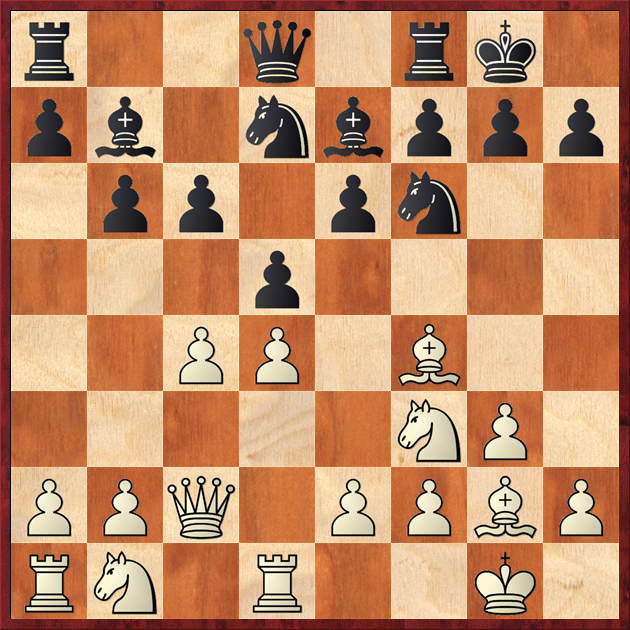
The key position of the variation, rooted in the debate around the continuation 11.Nc3 dxc4 12.Nd2 Nd5 13.Nxc4 Nxf4 14.gxf4 Qc7 15.e3 Rad8 и т.д.
11.b3
White intends to play Nc3 at his convenience, preparing the advance e2-e4. It turns out the opponent, not waiting around for such an event begins setting up a “stone wall” in the center.
11...Ne4 12.Ne5
There was sense in preparing for this knight leap with 12.Nbd2 f5 13.Ne5 Nxe5 14.Bxe5, and white keeps the square e5 free for his own piece.
12...Nxe5 13.dxe5 f5!
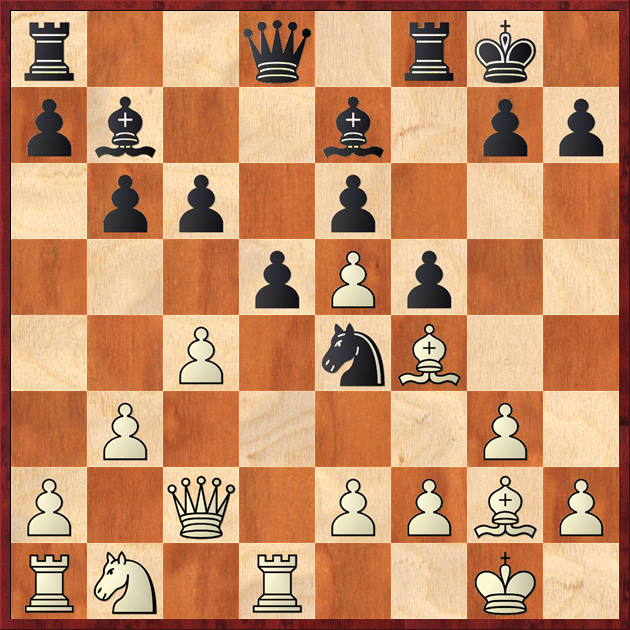
Black succeeds in solving his opening problems. In Dutch structures it is useful to lure the white pawn to e5, allowing black to “patch up” the only real weakness of his position.
14.Nc3 Qe8 15.a3 Rc8 16.Be3 Qf7 17.Nxe4 fxe4 18.f4
The e4 pawn break by means of 18.f3 c5! 19.fxe4 d4 turns to blacks favor.
18...c5 19.Bf2 g5
It becomes apparent that black's pawn chain is more aggressive.
20.e3
Surely, at the current moment it is already clear which of the opponent has more experience with the Dutch Defense! And Ernesto Inarkiev, who not too long ago set up a stone wall, now goes about tearing it down.
20…Qg6 21.Re1
White had a tactic at his disposal 21.Bxe4 dxe4 22.Rd7, but after B22…c6 23.Rxe7 gxf4 24.exf4 Rxf4 25.Be3 Rf3 26.Qd2 Rcf8 and it proves an empty threat. For that reason white decides, for the time being, to improve the position of his rook.
21...Kh8!
Useful in every sense because of a tactical trap.
22.Rad1?
The calm course of the game seems to have dulled white's senses.
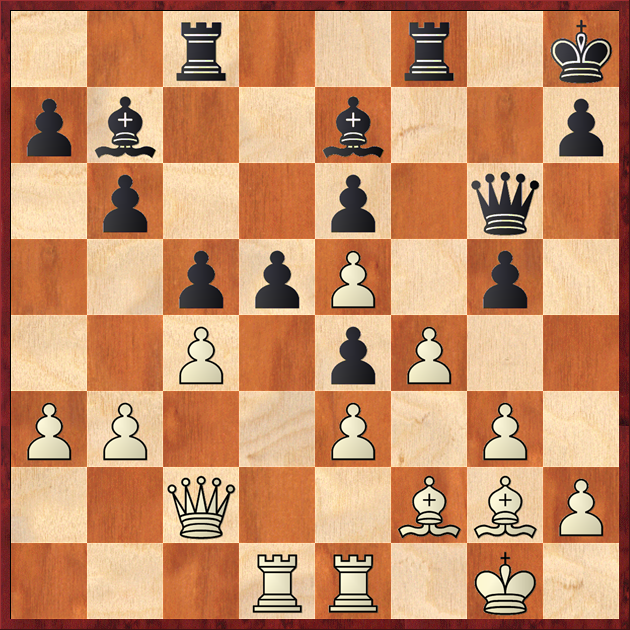
22...gxf4!
A wonderfully timed moment to liquidate the pawn tension.
23.exf4
Unsatisfactory is 23.gxf4 owing to 23…Rg8 24.Bg3 h5 25.Qf2 h4.
23...e3!
The spectacular concealed threat leads to material advantage.
24.Qxg6 exf2+ 25.Kxf2 hxg6 26.cxd5 exd5 27.Bxd5 Bxd5 28.Rxd5 Rfd8 29.Red1
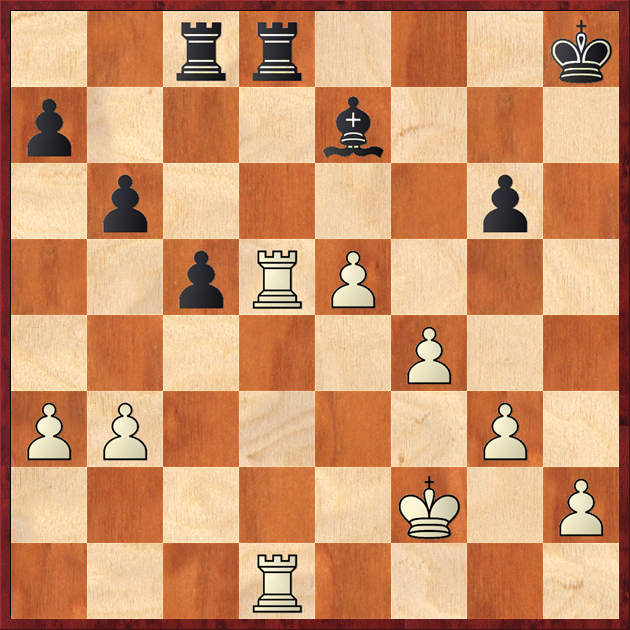
The game has forcibly transitioned to an engame in which white has two pawns for the bishop, and it so happens that on the kingside the g6 pawn is up against 4 (!) of white's infantry. And yet the position turns out to be in black's favor owing to the latent energy of the c5 pawn.
29...b5
An alternative was 29...Rxd5 30.Rxd5 c4 31.bxc4 Bxa3 etc. But black, initiating wholesale exchange of rooks, in his turn, strives to deny his opponent counterplay.
30.Rxd8+ Rxd8 31.Rxd8+ Bxd8 32.Ke3 Bb6 33.Kd3 Kg7 34.g4 Kf7 35.h4 Ke6 36.Ke4 c4 37.bxc4 bxc4 38.f5+ gxf5+ 39.gxf5+ Ke7 40.h5
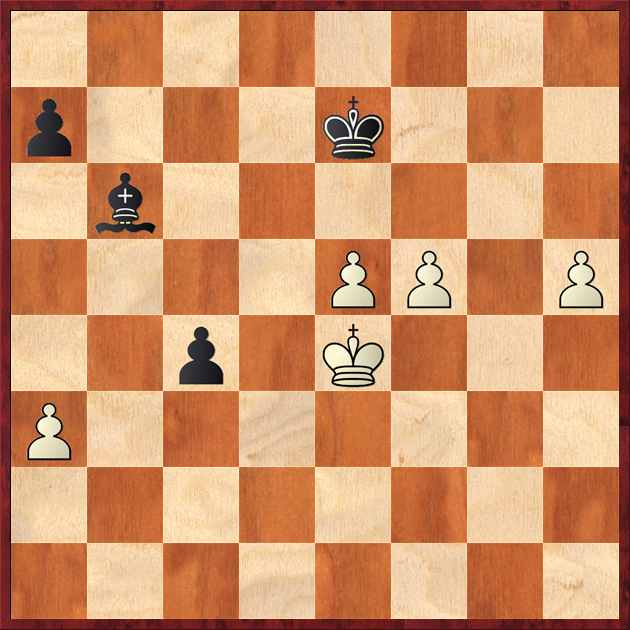
The following winning maneuvre is an object demonstration of the effectiveness of bishop against passed pawns.
40...c3! 41.Kd3 Bd4! 42.e6 Bf6 0–1 And the h5 pawn has no defense to the advance of the black king
The Tardy Reserves
Vladimir BELOUS – Daniil YUFFA
A.Pochkin Memorial, Student-grandmaster round-robin
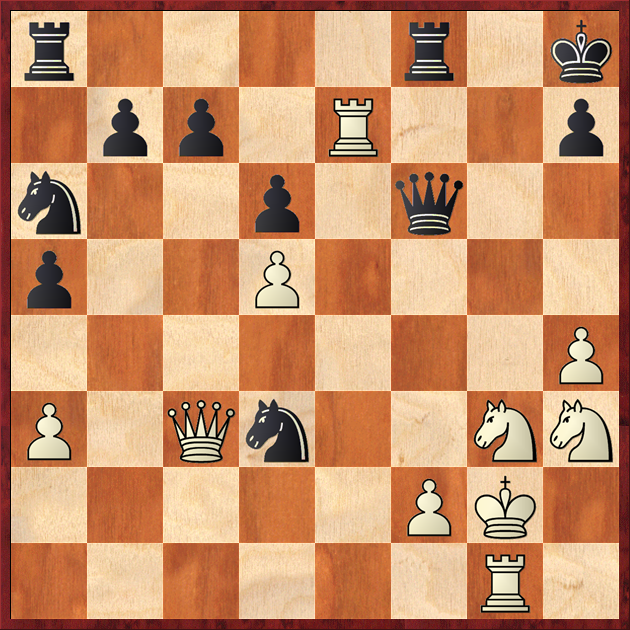
Before white is a dilemma—agree to the exchange of queens or sacrifice the exchange. The grandmaster from Moscow chooses the attack!
29.Rxh7+! Kxh7 30.Qxd3+
White conducts the advance with exceptional force. The fate of the black king depends on whether the reserves will come to his aid in time—the a8 rook and the a6 knight.
30…Qg6?
The decisive error. The computer holds in the dangerous situation calmly and recommends 30...Kh8 31.Ng5 Qh6 32.Nh5! Rae8! (32...Qxh5? 33.Qd4+ Kg8 34.Kh1) 33.Qd4+ Re5 34.f4 Qxh5 35.fxe5 Qe2+ 36.Kh3 dxe5 37.Qc3 Rf1, and the a8 rook, sacrificing his life, rescues the king.
31.Ng5+ Kh6
In case of 31...Kg7 a knight sacrifice settles the matter - 32.Qd4+ Kg8 33.Nh5! Qxh5 34.Kh1 with the win.
32.Qd2 Nc5 33.Kh2 Qd3
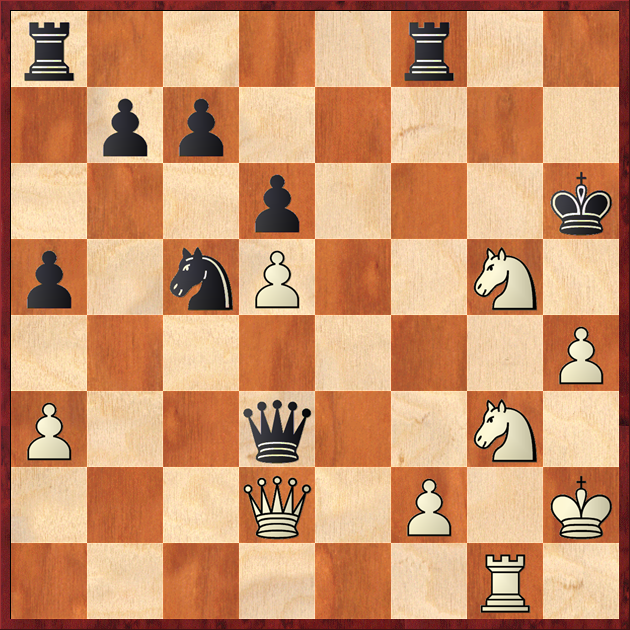
The black knight, having supported the queen's retreat do d3, desparately rushes to the aid of his king. However ...
34.Nf7+!
The computer shows yet another path to victory - 34.Nf5+! Rxf5 (34...Kh5 35.Ne6 Qxd2 36.Neg7#!) 35.Nf7+ Kh5 36.Qh6#.
34...Kg6 35.Qg5+ Kxf7 36.Nf5 1–0
Triumph on the Gluttonous Rank
Polina RODIONOVA – Irina DROGOVOZ
A.Pochkin Memorial, Women's student-grandmaster round-robin
1.e4 c5 2.Nf3 d6 3.d4 cxd4 4.Nxd4 Nf6 5.Nc3 a6 6.Be3 e6 7.f3 b5 8.a3 Nbd7 9.g4 h6 10.Qd2 Bb7 11.0–0–0
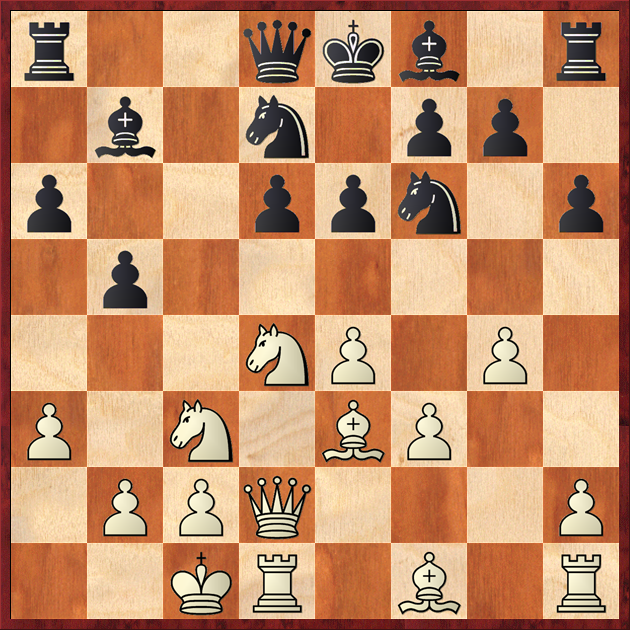
With a transposition of moves the opponents have reached an opening tabiya. Making the “sluggish” at first glance move a2-a3, white keeps her opponent's queenside counterplay under wraps.
11...d5
A responsible choice, although 10 years ago it was found in the games of a few famous chess players. Opening the center with a “sealed” queenside looks risky. Now black prefers the solid 11...Rc8.
12.exd5 Nxd5 13.Nxd5 Bxd5 14.Bg2
The logical continuation – the h1 rook aims for the e-file. In the games of the men-grandmasters 14.Rg1 was tried.
14...Nb6
After the knight retreat 14...Ne5 15.f4 leads back to the text since after 15…Nxg4 16.Rhe1 white's attack is quite strong.
15.f4 Nc4 16.Qe2 Bxg2?
In positions with a centralized king each mistake may prove fatal. White achieves the advantage after 16...Nxe3 17.Qxe3 Bc5 (17...Bxg2? 18.Nxe6 fxe6 19.Rxd8+ Rxd8 20.Qxe6+ Be7 21.Re1 Rd7 22.Qg6+ Kf8 23.Qxa6) 18.Qc3 Bxd4 19.Rxd4 0–0 20.Bxd5 exd5 21.Rhd1.
It seems the best devense was 16...Bc5 17.Bxd5 Qxd5 18.Bf2 Bd6 (18...0–0? 19.Nb3) 19.f5 Qe5, but this direction still requires a careful analysis.
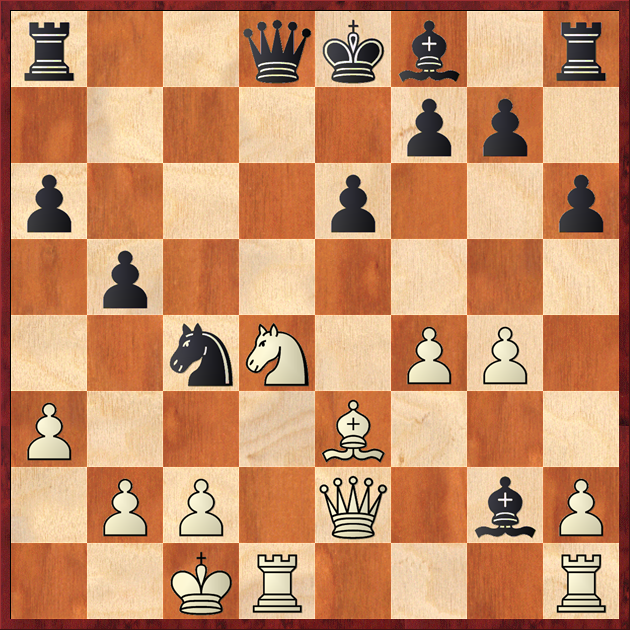
17.Nxe6!
A blow typical of the Sicilian defense!
The sluggish 17.Qxg2 Qd5 (17...Nxe3? 18.Qc6+ Ke7 19.Nf5+) allows black to escape the worst.
17...Qe7
In case of 17...fxe6 white brings the victory with 18.Rxd8+ Rxd8 19.Qxg2 Nxe3 20.Qc6+ Kf7 21.Re1. Or 17...Qc8 18.Nc7+ Qxc7 19.Bb6+ Qe7 20.Qxg2 Nxb6 21.Qc6+ Nd7 22.Qxa8+ Qd8 23.Rhe1+ Be7 24.Qc6, and the black pieces are completely bound.
18.Qxg2
Of course here also possible was 18.Nс7+.
18…Rc8
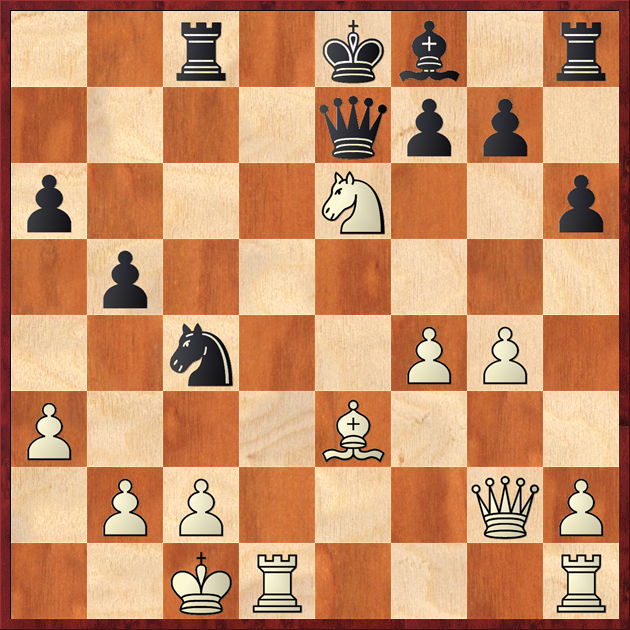
19.Bc5!
A beautiful strike!
The “delirious” computer shows yet another way to the prize: 19.Rd8+! Rxd8 20.Qc6+ Qd7 (20...Rd7 21.Qc8+ Rd8 22.Nc7+) 21.Nc7+ Ke7 22.Bc5+ Nd6 23.Nd5+ Ke8 24.Re1+ with the win.
19...Qxe6
Or 19...Rxc5 20.Qa8+.
20.Rhe1 Bxc5 21.Rxe6+ fxe6 22.Qb7 0–0
Completely horrible was 22...Nb6 23.Qxg7.
23.Rd7
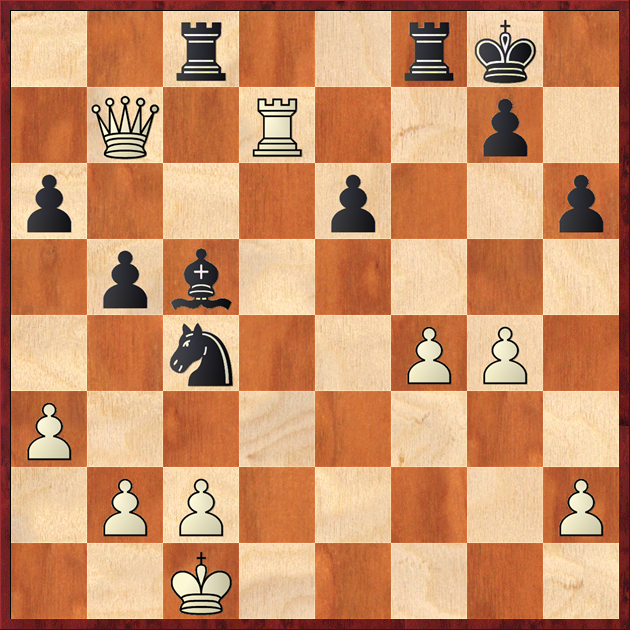
An assault of the major pieces on the “gluttonous” ran decides the outcome of the battle—the black king, who somehow managed to slip away from the center, is completely defenseless in his new home!
23...Kh8 24.Rxg7 Bd4 25.Rh7+
A bit more accurate was 25.Rg6 Bxb2+ 26.Kb1 Rfd8 27.Ka2.
25...Kg8 26.Rxh6 Rfd8
Black could have held on longer with 26...Bxb2+ 27.Kb1 Bg7 28.Rg6 Nxa3+ 29.Ka2 Rxc2+ 30.Kxa3 Rf7, though here everything is clear.
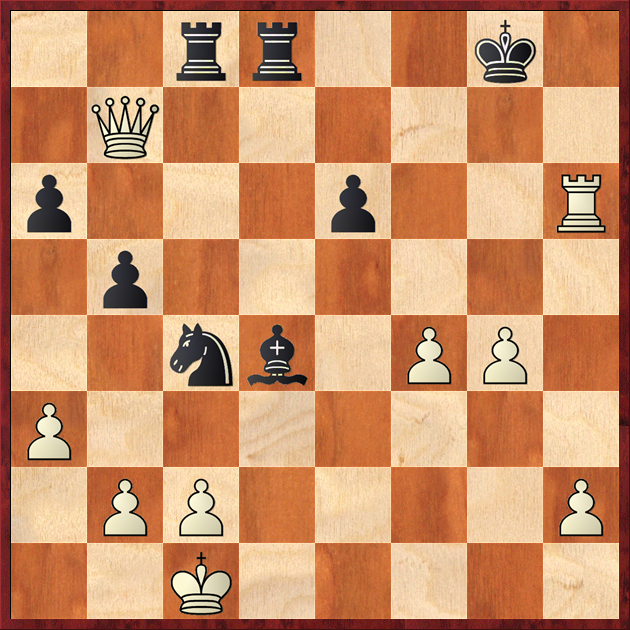
27.c3!
A necessary precaution. The hasty 27.Qh7+ Kf8 28.Rg6 also leads to mate … , but now it's the white king - Bxb2+ 29.Kb1 Rd1+ 30.Ka2 Ra1+ 31.Kb3 Rxa3+ 32.Kb4 Bc3#! Now black is without defense.
27...Nd6 28.Qh7+ Kf8 29.Rxe6 Bg7 30.f5 Nf7 31.Rg6 Be5 32.Qg8+ 1–0















